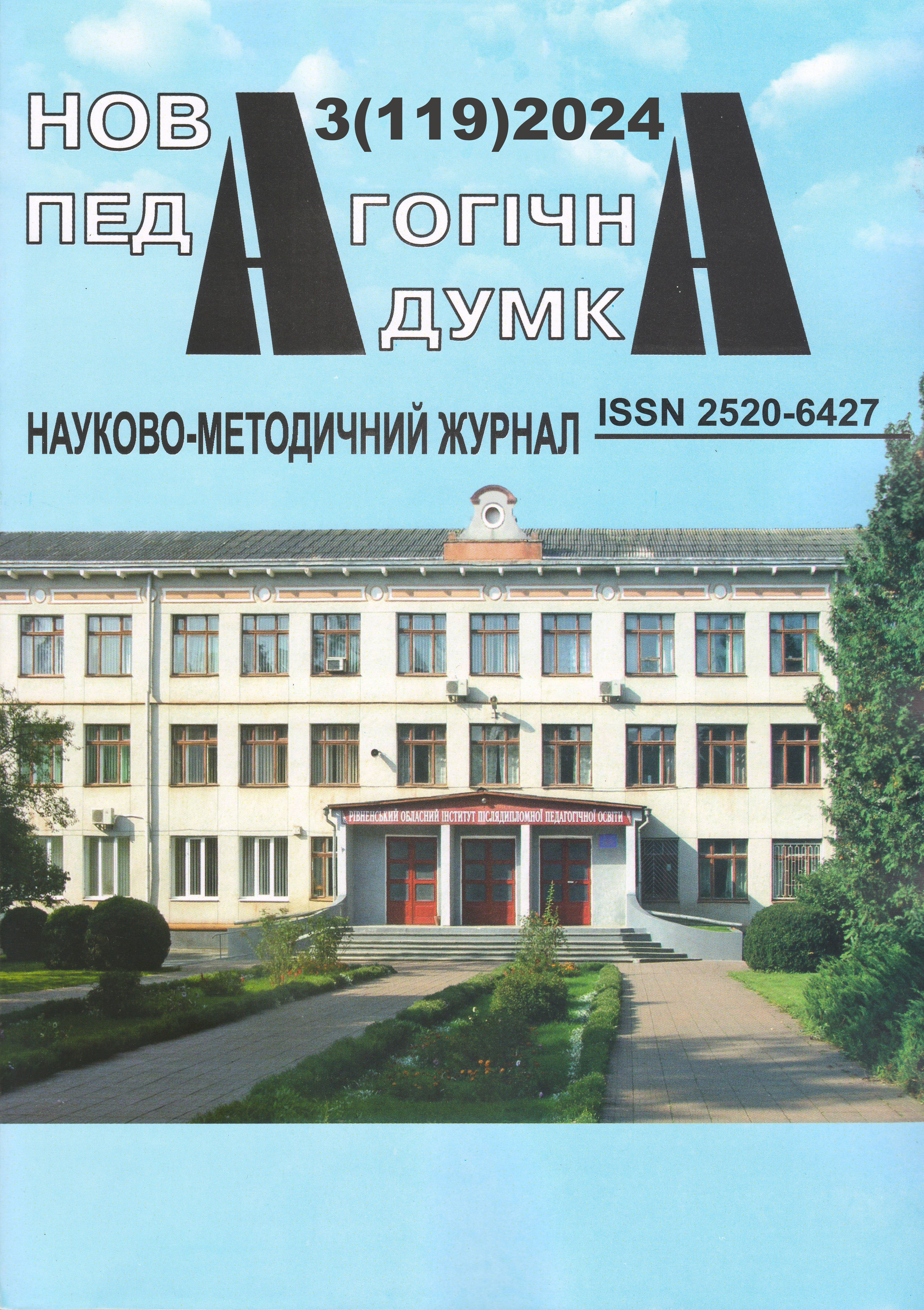The motivational component as an important factor in increasing the interest of students in the subject of fine arts
Abstract
Based on the analysis of scientific works in the fields of psychology and pedagogy, and on the basis of professional activity in institutions of general secondary education, the methods of motivating the educational activity of primary and secondary students during fine arts lessons are outlined. In particular, examples of the use of interactive methods at all stages of the lesson are provided and techniques for implementing a practical approach in teaching fine arts are demonstrated. The attention is focused on the importance and effectiveness of the motivational component of the lesson to increase the interest of schoolchildren in the subject. The need for the teacher to use such forms and methods of work that develop emotional intelligence, evoke personal positive feelings in children, which is the basis of creative activity, is substantiated. It is indicated that the variability of tasks, differentiated and individual approaches contribute to increasing the level of educational achievements of students. The ways of formation of external and internal motivation in the process of learning fine arts at school are outlined. Attention is paid to the peculiarities of the perception of educational material by students of different levels, significant differences in the attitude to the performance of practical tasks and self-evaluation of creative works by schoolchildren of primary and secondary education levels are determined. Taking into account the possible manifestations of children's lack of confidence in their own abilities, as well as for the maximum revelation of students' creative abilities, the importance of creating a situation of success, organizing a positive atmosphere in the lesson is emphasized. The use of modern methods and techniques is described, which, in addition to the skills of artistic activity, contribute to the development of thinking, speech, attention, memory, stimulate the search activity of students, encourage them to express their own thoughts, search for interesting creative ideas, develop imagination and give children confidence in their thoughts and actions. This work proves that a modern lesson is an interaction between the teacher and students, which is based on the active participation of both sides of the educational process to achieve the expected learning results and to cultivate a culturally educated personality.





